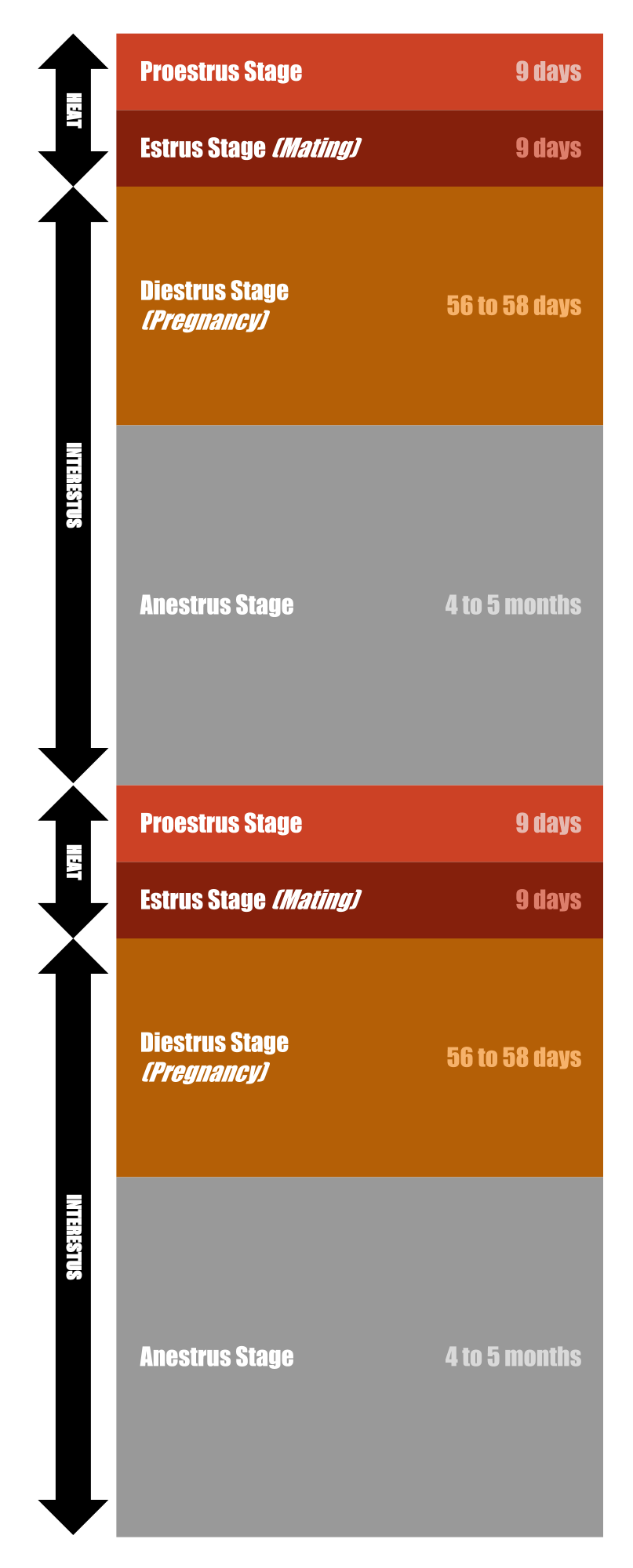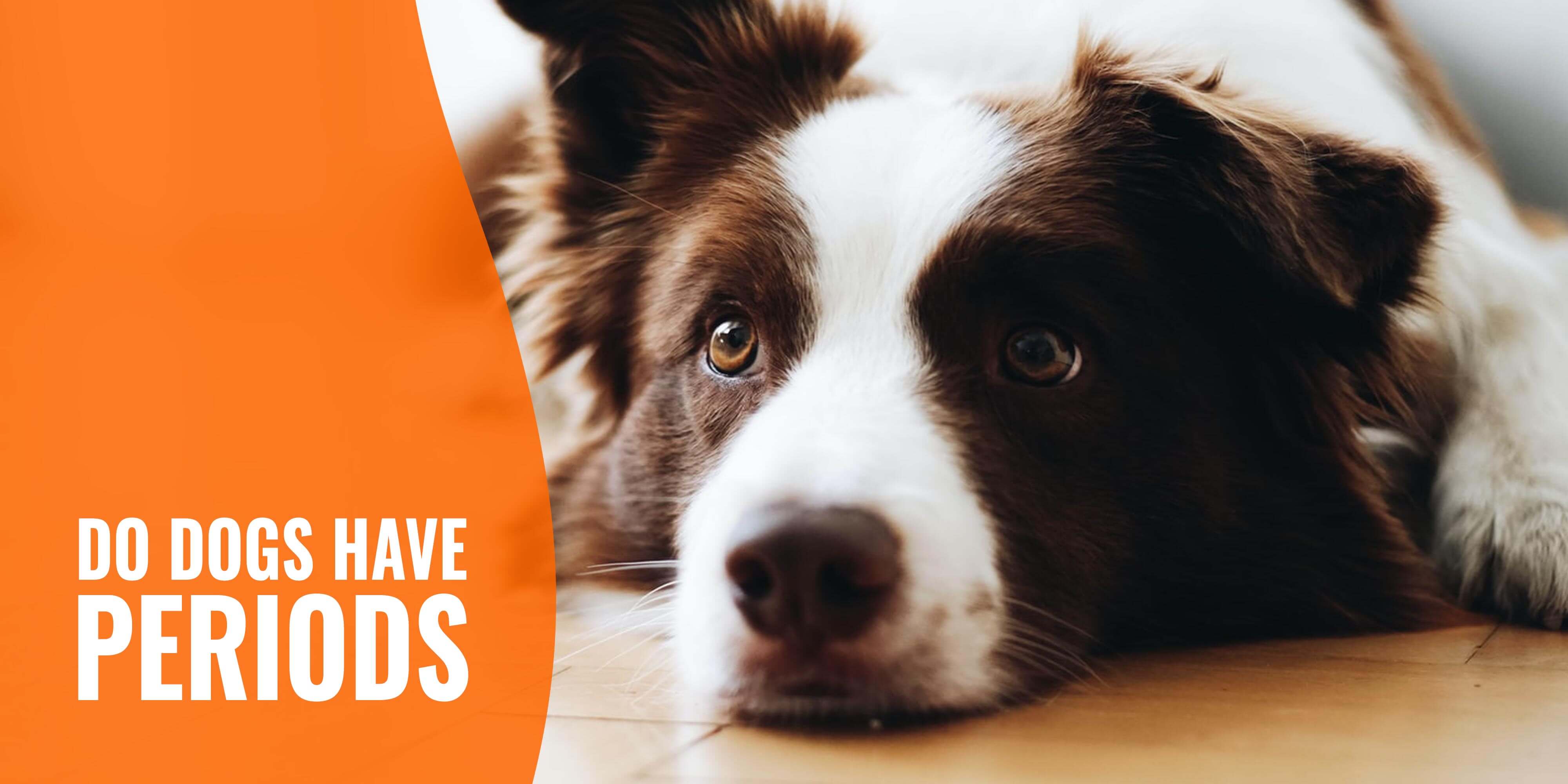If you’re thinking of adopting a female dog, it’s important to know that they go through a reproductive cycle known as an estrous cycle. This cycle involves them bleeding once a month after they’ve reached maturity.
However, there is an easy solution to avoid this: spaying your dog eliminates the need for dealing with these cycles altogether. If you decide not to spay your dog, you can still care for her during her heat cycle by keeping her calm and grooming her. Learning about your dog’s reproductive cycle can help you be a better owner and provide the best care for your furry friend
Signs of Periods in Dogs
In humans, bleeding represents the end of the reproductive cycle, whereas, in female dogs, bleeding represents the start of the reproductive cycle. It indicates that the dog is in heat or in season, and her vulva may become swollen.
During the heat cycle, your pet may show both physical and behavioral changes. You may notice that your dog appears more anxious and distracted than usual, urinates more often, and may even raise her leg differently when urinating. Your dog may also become more receptive to male dogs and show flagging behavior, where she raises her rear and turns her tail to one side.
If you find your dog more irritable or lazier than usual, you should give her more attention and affection.
It’s essential to pay attention to your female dog’s heat cycle and notice any abnormalities such as skipped heats or elongated or shortened stages. Although abnormalities are common, they should not occur regularly or frequently.
In summary, bleeding in female dogs is a sign that they are in heat, which means they are fertile and ready to mate. During this time, your dog may show physical and behavioral changes, including increased anxiety, distraction, and more frequent urination. Paying attention to your pet’s heat cycle and noticing any abnormalities will help ensure her overall health and wellbeing.

Four Stages of Dog Periods
The canine reproductive cycle is divided into four stages once dogs reach puberty. Each phase is associated with different changes that may be physical, behavioral, physiological, or hormonal.
The first estrous cycle starts around puberty when the dog is about six months of age. However, the exact time age varies from dog to dog and breed to breed. As a general rule of thumb, smaller dogs mature sooner than larger dogs.
The estrous cycle may happen twice a year for most bitches. But the estrous cycle can occur four times for smaller dogs, and once every eighteen months for larger canines such as Saint Bernards.
1. The Proestrus Stage
At this stage, female dogs show evident signs of being ‘in heat.’ Male dogs may be attracted to female dogs, but most females are not receptive at this time. This is because the female dog is not ready to mate.
The estrogen levels peak at the proestrus stage – the vulva is engorged, follicles develop, and there is a bloody discharge. And you’ll find that your gentle furry friend has turned somewhat moody. On average, this stage can last up to 9 days. In some breeds, it can even go up to 27 days.
2. The Estrus Stage
The estrus stage can last from 4 to 24 days. It is at this stage that female dogs are receptive to males. The estrogen levels decrease, therefore, the vulva softens, and the blood in the vulvar discharge is reduced. Also, progesterone levels increase.
Now, it is during this time that most pet owners need to be most attentive. So, if you take your pet out for a walk, make sure you have a leash on it. And if it is outside, then never leave her unattended, even within a fenced wall.
3. The Diestrus Stage
The diestrus stage is the third stage of the canine reproductive cycle and it lasts for around 20 days. In the diestrus stage, the progesterone levels tend to decline, regardless of whether the dog is pregnant or not. It is during this phase that the vulva returns to its regular size, and the dog period blood becomes redder. The female dog no longer accepts the male dog for mating, and the ‘heat’ is complete.
Chances are that you’ll also see apparent signs of regret in your hairball’s eyes for its imprudent behavior. Though we can’t promise you that!
4. The Anestrus Stage
This stage marks the time between the diestrus stage and the next proestrus stage. The Anestrus stage may last up to 4 months. But for larger breeds, it may last longer. And it is during this stage that the uterus prepares itself for the next possible pregnancy. There is no longer any discharge, and the vulva, as well as the behavior of your best bud, is back to normal.
Now, its kind of a surreal experience for the majority of the new pet owners to witness their impeccably bred pets behaving quite so excited. But it’s a very natural state for canines. The best way to deal with the scenario is to show your furry friends that you care for them. And your concern will help overcome their behavioral problems.
On the other hand, if you wish to avoid the entire set of problems associated with the estrous cycle, then you can simply get your dogs spayed. Many veterinarians recommend getting dogs spayed to make their lives easier as well as yours.

Do Dogs Have Periods – FAQs
It goes without saying that most pet parents are eager to educate themselves about how to calm a dog in heat or what to do when your dog is in heat. Hence, we’ll quickly go through some questions that are often asked by pet lovers and owners, alike in this section.
Just by the way, you can also check out our dog heat cycle FAQs page to get answers to some of the most commonly asked questions about heat in dogs.
The first thing you should do when your dog gets her period is to consult a vet and ask about all the protocols that you need to follow. Generally speaking, there’s nothing to worry about when your dog goes in heat. Just make sure you provide your dog with an appropriate amount of exercise and rest during her period. The easiest way to do that is to take her out in the yard to play a bit and walk. Make sure that you strictly supervise her at all times and that no unwanted mating occurs.
Another worrying aspect is that female dogs may experience pain during their periods. And if there is too much pain, then your vet may even prescribe certain medications to relieve the discomfort or fever. It is never okay to give your dog any medications without a vet’s prescription. Just remember to keep a close eye on your pet during this phase, and pander to its every need – simple, right?
Most dogs have an estrous cycle that lasts for 2-4 weeks. A dog may be ‘in heat’ at the beginning of the cycle but not receptive to male dogs. But it does become ready to mate after 7-10 days, and this phase may last for 7-9 days.
If you really want to make sure you know when your dog is in heat, then you can download an app that works as a dog heat cycle calculator.
Dogs stop having periods if you get them spayed. When your dog reaches puberty, you can get the vet to spay them, to avoid any problems related to the estrous cycle completely. However, even if your dog is not spayed, the older it gets, the less frequent its heat cycle becomes.
But if you’re wondering if your dog will go through menopause, then the answer is no. Dogs don’t go through menopause, so your dog will go through a reproductive cycle all of its life, if not spayed. In this regard and many others, dogs don’t function like humans.
Additionally, having to go through an estrous cycle, at a later stage in life, can be dangerous for your pet. So, do take care and have a discussion with the vet about the health of your pet as soon as you can. When it comes to the health of your fur-baby, precaution will always be better than cure.
The most advantageous aspect of spaying your dog is that it will no longer go through the estrous cycle. Thus, it does not get its periods. Furthermore, your canine will not go into ‘heat.’ You can be sure that you won’t need dog period diapers. Lastly, your female dog will not be able to get pregnant and will be safe from pyometra (a uterus infection that can be life-threatening) developed at an older stage in most unspayed female dogs.
It is important to understand your female dog’s heat cycle and how their periods may affect them. Breeders and owners alike should be aware of these facts and we hope we have helped you to feel more confident!
